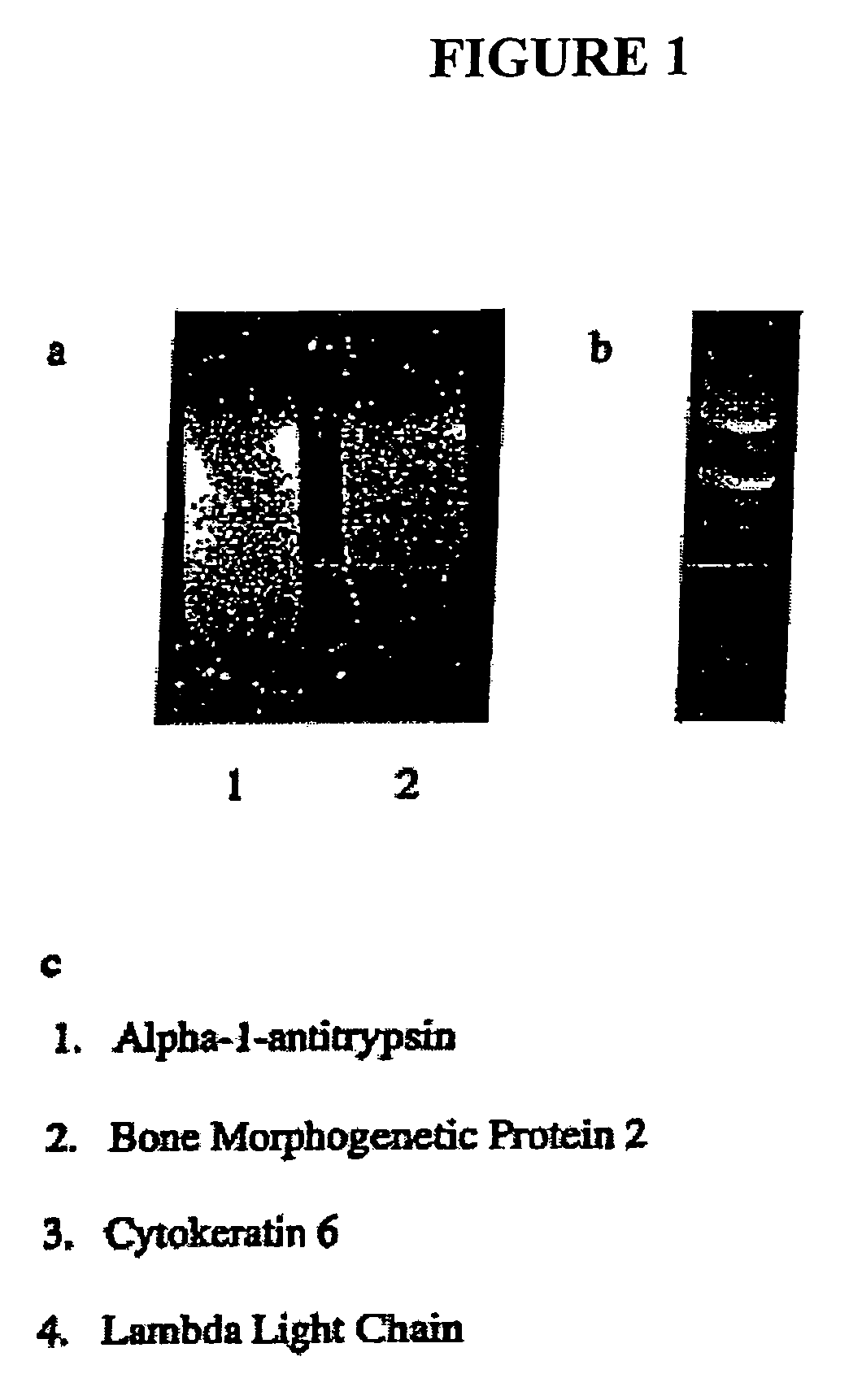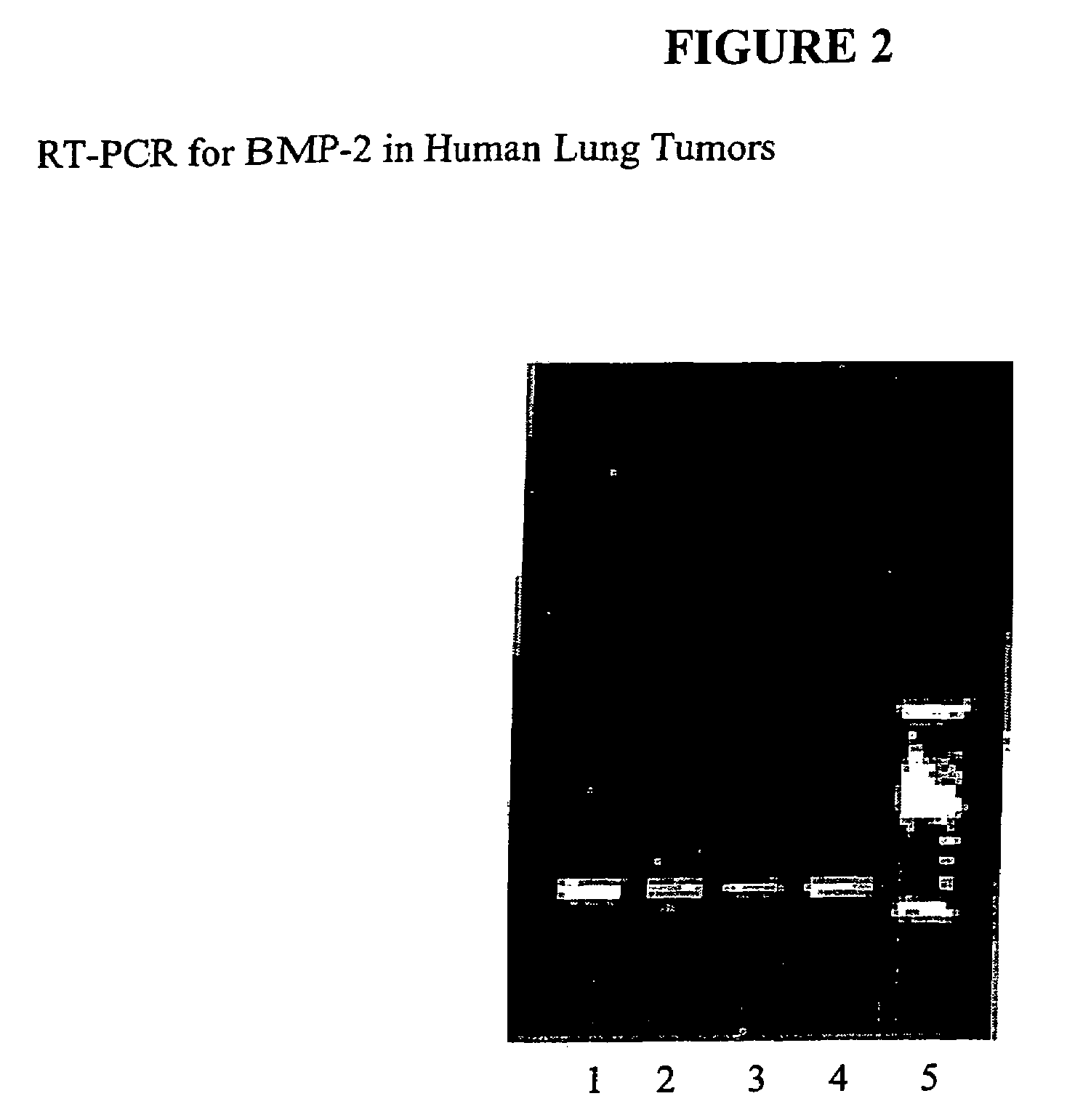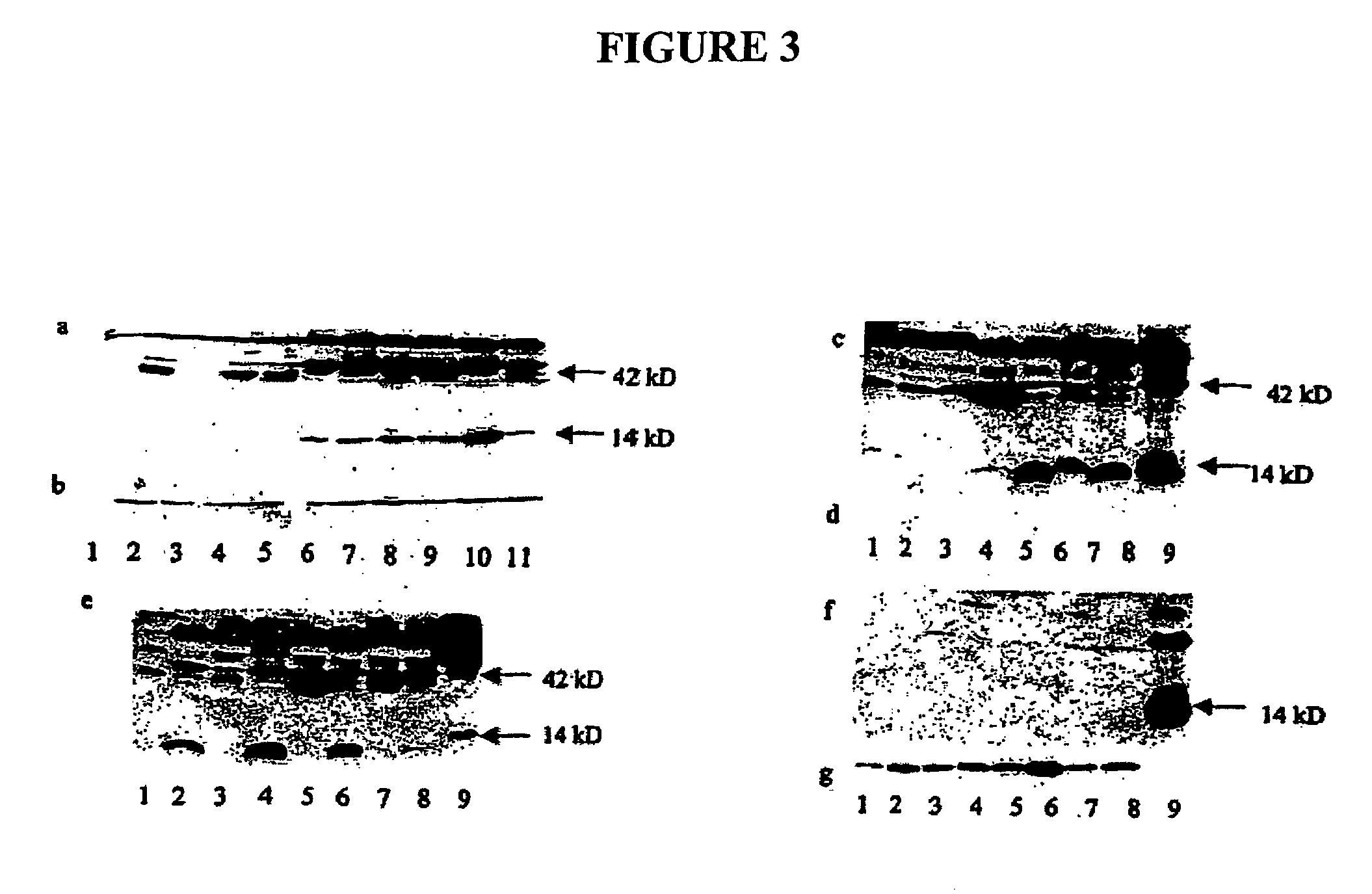Bone morphogenetic protein-2 in the treatment and diagnosis of cancer
a bone morphogenetic protein and cancer technology, applied in the field of molecular biology, immunology, medicine, can solve the problems of new and unexpected teaching that bmp-2 is a compound expected to treat cancer or treat the risk of cancer, and achieve the effects of increasing the number of blood vessels in the tumor, increasing the number of blood vessels, and increasing the formation of blood vessels
- Summary
- Abstract
- Description
- Claims
- Application Information
AI Technical Summary
Benefits of technology
Problems solved by technology
Method used
Image
Examples
example 1
Identification of BMP-2 Using Representational Difference Analysis Subtraction Technique
[0146]Representational difference analysis (RDA) subtraction technique was used to identify genes highly expressed in a non-small cell lung carcinoma obtained from a patient (tester) in comparison to normal bronchial human epithelial cells (driver). The technique for RDA described in the following references was followed: Holmes, M. L., et al., Molecular and Cellular Biology 19: 4182-4190 (1999); Hubank, M., Nucleic Acids Research 22:5640-5648 (1994). Normal human bronchial epithelial cells were purchased from Clonetics, BioWhitaker (Walkersville, Md.) and were maintained in serum free media. Human tissue specimens were obtained directly from the operating room and immediately frozen in liquid nitrogen. Tissue was stored in liquid nitrogen at −70° C.
[0147]To perform RDA, mRNA was purified from the samples using Oligo dT columns (Pharmacia, Peapack, N.J.) according to the manufacturer's instructio...
example 2
Detection of Expression of BMP-2 in Human Lung Cancer Specimens Using RT-PCR
[0148]Reverse transcriptase polymerase chain reaction was performed using standard techniques well known in the art. The forward primer was acgagagctctcactggtcc (SEQ ID NO: 15). The reverse primer was cattccggattacatgaggg (SEQ ID NO: 16). The chain reaction consisted of denaturation at 95° C. for 1 min, annealing at 54° C. for 1 min, and extension at 72° C. for 2 min for 33 cycles.
example 3
Detection of Over-Expression of BMP and BMP Receptors in Various Cancer Tissue Specimens and Lung Cancer Cell Lines
[0149]The inventor detected expression of BMP and BMP receptors in a number of normal and cancerous tissue specimens and cells. As described above, all human tissue specimens were obtained directly from the operating room and immediately frozen in liquid nitrogen and stored at −70° C. Normal human bronchial epithelial (NBE) cells were purchased from Clonetics, BioWhitaker (Walkersville, Md.) and were maintained in serum free media. Immortalized human bronchial epithelial (IHBE), BEAS-2B, cells were derived from normal bronchial epithelial cells immortalized with an adenovirus-12-5-V40 hybrid virus. A549 and H7249 are highly invasive human lung cancer cell lines. The cell lines were cultured in 5% fetal bovine serum (FBS) in Dulbecco's Modified Eagles medium (DME) containing penicillin, streptomycin, and glutamine with 5% pCO2 at 37° C. Western blot analysis was used to ...
PUM
| Property | Measurement | Unit |
|---|---|---|
| concentration | aaaaa | aaaaa |
| concentration | aaaaa | aaaaa |
| concentration | aaaaa | aaaaa |
Abstract
Description
Claims
Application Information
 Login to View More
Login to View More - R&D
- Intellectual Property
- Life Sciences
- Materials
- Tech Scout
- Unparalleled Data Quality
- Higher Quality Content
- 60% Fewer Hallucinations
Browse by: Latest US Patents, China's latest patents, Technical Efficacy Thesaurus, Application Domain, Technology Topic, Popular Technical Reports.
© 2025 PatSnap. All rights reserved.Legal|Privacy policy|Modern Slavery Act Transparency Statement|Sitemap|About US| Contact US: help@patsnap.com



